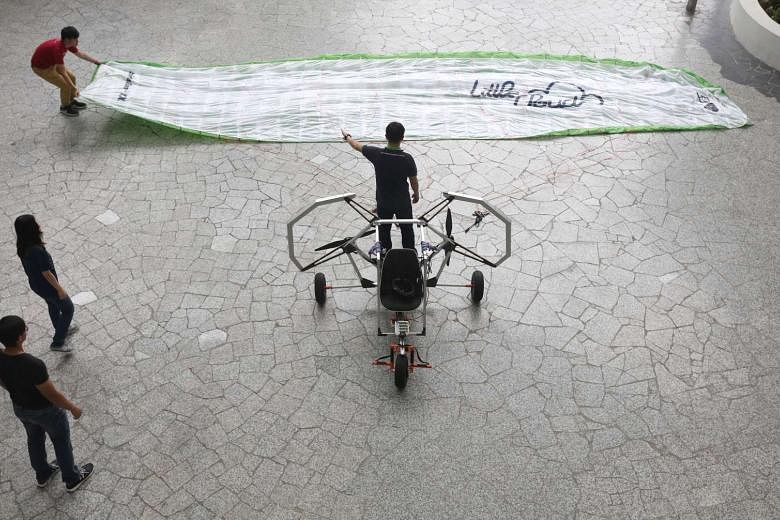SINGAPORE - A team from the National University of Singapore (NUS) has designed and built what it said is the world's lightest electric paraglider trike - an aircraft with two rear-mounted twin propellers.
The team of eight NUS engineering students built the aircraft, called The Delta, after it was challenged to build a flying vehicle for a new National Geographic Channel series called Machine Impossible.
The Delta, which weighs just 49kg, can carry one person up to 75kg and fly up to 36kmh for a flight time of 10 minutes.
The team designed and built The Delta from January to March, before its first flight on March 19, 2016.

Mr Chan Wai Yang, 23, a Year 3 Electrical Engineering student at NUS who was one of the eight students in the team, said: "Designing and building The Delta was like an experience like no other. We had a great learning experience tackling various aspects of the project.
"It was an engineering challenge we greatly relished."
The Delta uses two electric motors each weighing 1.5kg, which provide extra stability.
The first flight, which took place in Sungai Rambai Aerodome in Malacca, was a success at the first try.
The team had also designed several features to ensure the safety of the pilot, such as a roll cage for protection, fibreglass rods to cushion landing and barrier nets between the pilot and the propellers.
Associate Professor Martin Henz, the supervisor for this project, said: "While it isn't a form of transportation, as a form of recreation, The Delta could possibly be a great contribution to the sport of paragliding."
The Delta uses two Lithium polymer batteries to provide power for the propellers and the motors without excessive noise and added weight for the pilot.
Prof Martin Henz said: "We are thrilled to have this opportunity to build an all-new machine for the National Geographic Channel.
"Such projects have tremendous value in the education of our students in engineering."


